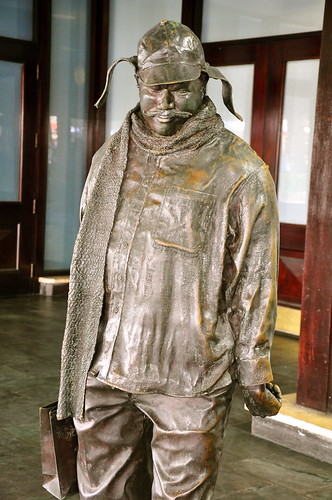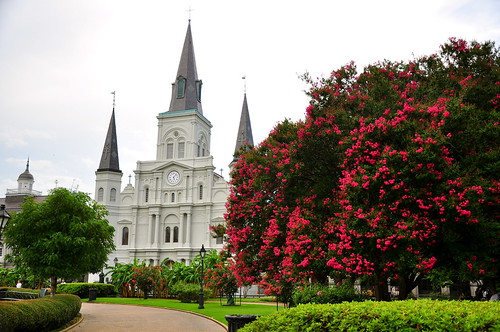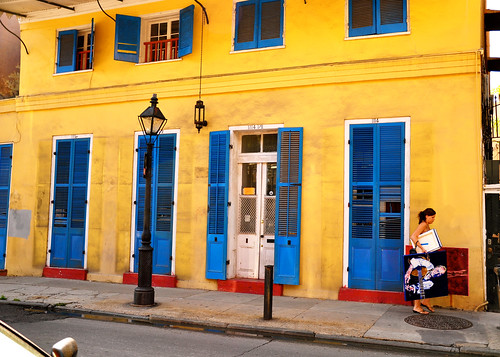I felt the same way about New Orleans. Besides The Crescent City and The Big Easy, New Orleans is also known as The City that Care Forgot because its residents are so easy-going and carefree. Everyone I met and talked to was incredibly nice and welcoming and people smiled and talked to you on the street. There's a laissez-faire attitude about everything. I decided to adopt their ways and I found myself saying hello to everyone and talking to anyone I stood next to for more than a moment. Typically I would have been irritated by the hot, hot, sticky weather and the constant stream of sweat running down my face, but I decided to go with it. So what if my bangs were stuck to my forehead and my face was beaded with sweat? Everyone else was suffering the same effects.
I walked on Canal Street every day to get to my hotel. It didn't look too different from other big city's main streets, except for the Canal Streetcar running through the center and the Voodoo Marts at periodic intervals. The statue of the A Confederacy of Dunces character Ignatius J Reilly was in front of my hotel -

- where there used to be a DH Holmes department store.

There were streets with names like Tchoupitoulas and Carondelet. (Bourbon Street, too, but it's dumb.) Lubbock has a lot of things going for it, but one thing it doesn't have is beautiful architecture and it's not walkable in the least. In the French Quarter, I must have walked up and down Royal Street a dozen times. On Royal there were dozens of lovely old French-style homes that are now storefronts or are still old homes. They were painted in bright colors and adorned with hanging flower pots.

The Quarter is centered around Jackson Square, named after Andrew Jackson way back in 1814. The Pontalba Apartments bordering the square are oldest continuously rented apartments in the States. The Louisiana State Museum/Cabildo by the square was where the Louisiana Purchase documents were signed in 1803. The St Louis Cathedral in the square was built in the 1700s.

Something about this last photo captures the magic of the Quarter for me. The charming building's yellow walls, blue shutters, and red railings. The gas lamp. The address! 1114 1/2! The young lady walking and carrying her art to sell on the street.

And the food, oh my, the food! I definitely ate some of the best food of my life there. Twenty-four hours of dining I'll probably never top was a lunch at August, my dinner at Cochon, and breakfast the next day at Brennan's. I almost ate my last meal at The Pelican Club. More to come on all of that.
The last day I was in New Orleans, I had an airport shuttle to catch, but I missed it because I took too long of a ride through the Garden District on the St Charles Streetcar. I had such a fantastic time, I was reluctant to leave. If you haven't visited before, New Orleans is a must see. And now, on to the foodie stories!
2 comments:
New Orleans didn't even make the top ten of the "most walkable" cities: mhttp://www.huffingtonpost.com/2011/07/22/walkable-cities_n_906442.html#s313351&title=Most_Walkable_2
Good point. The Quarter and Convention Center areas where I mainly stayed were walkable. The rest of the city didn't seem to be walkable. New Orleans has got nothing on New York or Washington, DC, but it was really good for a Southern city.
The walkable cities list seems bogus. Lubbock scored in the mid-range but I don't think there's a walkable neighborhood in the entire city: http://www.walkscore.com/rankings/cities/
Post a Comment